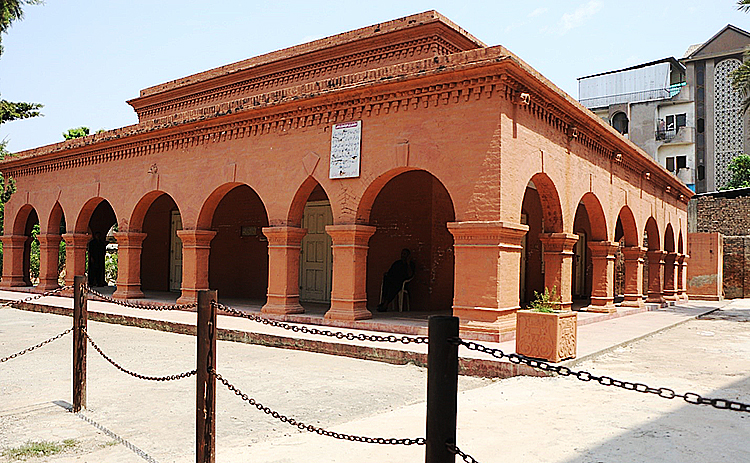
Prior to Partition, Rawalpindi was home to several significantly sized minorities of Hindus, Sikhs and Parsis.
By Mahnoor Shabir
The twin cities of Rawalpindi and Islamabad are not particularly known for their religious diversity, or in fact diversity of any kind. The majority of their population consists of government workers and bureaucrats, or people merely in the city to work. A little-known fact is that prior to Partition, Rawalpindi was home to several significantly sized minorities of Hindus, Sikhs and Parsis. The older parts of Rawalpindi are brimming with gurdwaras and temples (most of them now either defunct or converted to houses), which speak of the multicultural past of the city.
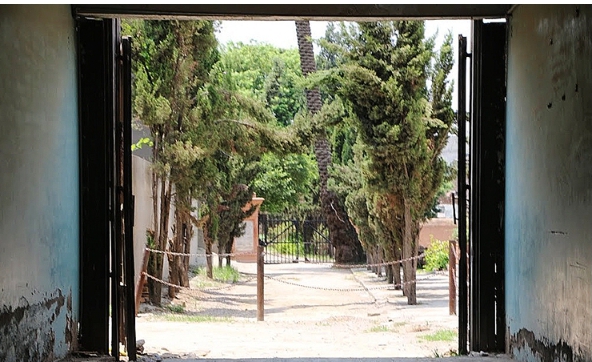 Parsis are one of the lesser-known communities of Rawalpindi, so it was surprising to find that a Parsi cemetery exists near the busiest road in the city. Tucked behind the bustling jewelry market on Murree Road, the cemetery is the only known religious site of the dwindling Parsi population of Rawalpindi, which numbers about fifty families in all as of now.
Parsis are one of the lesser-known communities of Rawalpindi, so it was surprising to find that a Parsi cemetery exists near the busiest road in the city. Tucked behind the bustling jewelry market on Murree Road, the cemetery is the only known religious site of the dwindling Parsi population of Rawalpindi, which numbers about fifty families in all as of now.
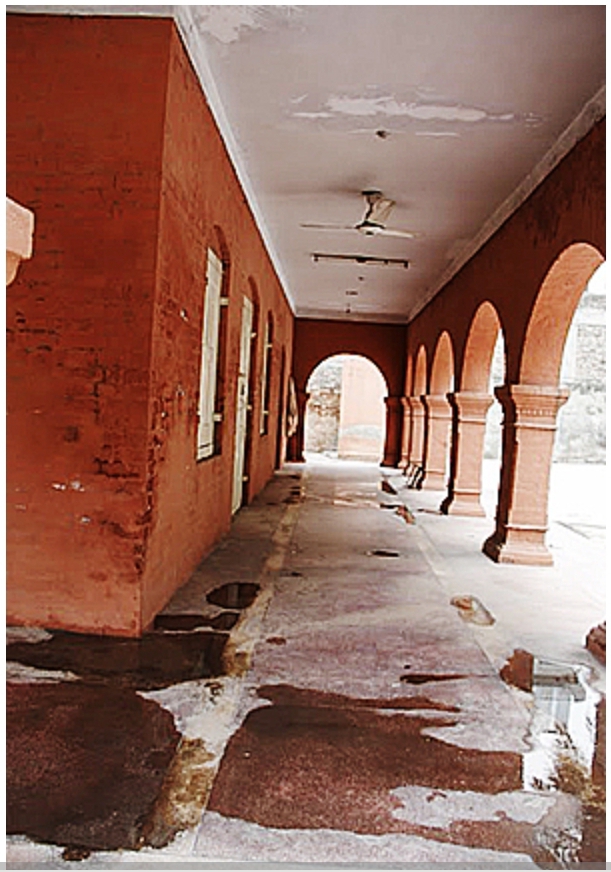
Traditionally, Parsis consider the elements of water, air, fire, and earth to be sacred. They believe that corpses are impure because their putrefaction pollutes these elements. Hence, they refrain from burning or burying their dead at land or sea. Instead, they prefer to leave dead bodies in an open area where they are consumed by scavenger birds, as the last act of charity, and as a way of purifying the remains. For this purpose, Parsis have special ‘Towers of Silence’, high structures on which the corpses are placed and are quickly fed upon by birds and insects, while the bones are dried and disintegrated by the sun. However, due to rapid urbanization, as well as a diminishing population of vultures, erecting and maintaining such structures is next to impossible in most cities. Although Karachi does have two such towers, Rawalpindi’s sizably smaller Parsi population has resorted to burying their loved ones in a cemetery.
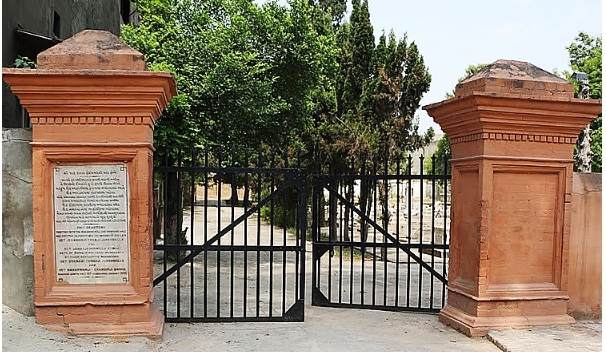
It comes as a surprise that amidst the ostentatious jewelry shops and the sea of people crowding the Murree Road area, one finds an old Zoroastrian cemetery. This structure stands as a symbol of the city’s heritage, a reminder of an era gone by to current and future generations. However, so far it has not received any attention or recognition from the central, state or regional government bodies. Built in 1989 by a Parsi merchant family, this single-story building has quite a colonial edge to it. The entire building is plastered with red mortar. The rather well maintained and clean red-bricked structure contains an open courtyard and continuous verandahs that consist of pointed arches and surround the building from three sides. There are also a large number of white wooden doors and windows.
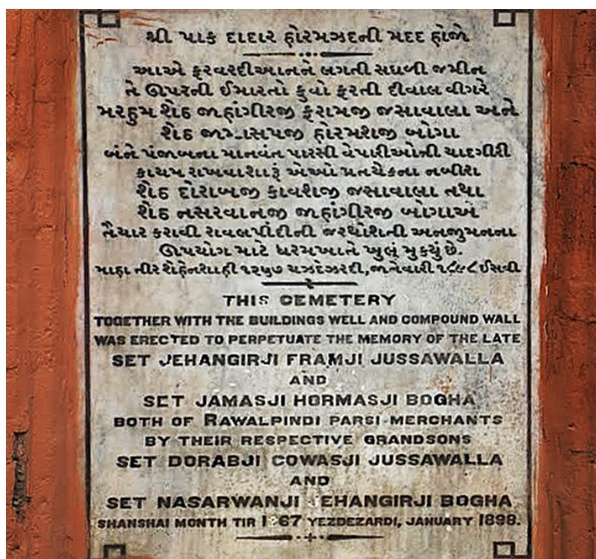
Next to the building, there is a path lined with palm trees and date trees, adding to the serenity of the monument. The path leads to a black metallic gate, which opens into the graveyard.
A marble plaque at the entrance of the cemetery contains an inscription in English, along with Gujarati, the language of the Parsis.
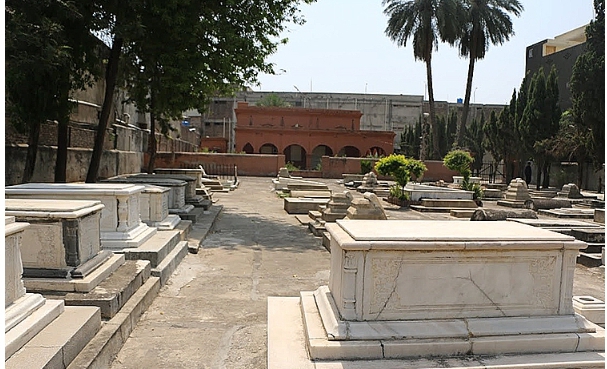 The well-planned graveyard located within the compound is lined and shadowed with tall evergreen trees. It houses several graves, including those of babies and elders. The plan of the site reveals that tomb structures and landscape areas were merged with a brick pavement to facilitate free movement of people. The graveyard boasts marble sculptures of different shapes and sizes. The tombstones on each grave are also quite different from each other; some are placed on top of the graves and can be seen from a lateral view, while others are placed on a plinth on the grave. These marble tombstones reflect the Gujarati origins of Rawalpindi’s Parsi community, and have inscriptions in Gujarati script. The dates of death are given according to the Zoroastrian and Christian calendars. The immaculate condition of the cemetery building increases the aesthetic and architectural significance of the locality, and generates a serene and peaceful atmosphere.
The well-planned graveyard located within the compound is lined and shadowed with tall evergreen trees. It houses several graves, including those of babies and elders. The plan of the site reveals that tomb structures and landscape areas were merged with a brick pavement to facilitate free movement of people. The graveyard boasts marble sculptures of different shapes and sizes. The tombstones on each grave are also quite different from each other; some are placed on top of the graves and can be seen from a lateral view, while others are placed on a plinth on the grave. These marble tombstones reflect the Gujarati origins of Rawalpindi’s Parsi community, and have inscriptions in Gujarati script. The dates of death are given according to the Zoroastrian and Christian calendars. The immaculate condition of the cemetery building increases the aesthetic and architectural significance of the locality, and generates a serene and peaceful atmosphere.
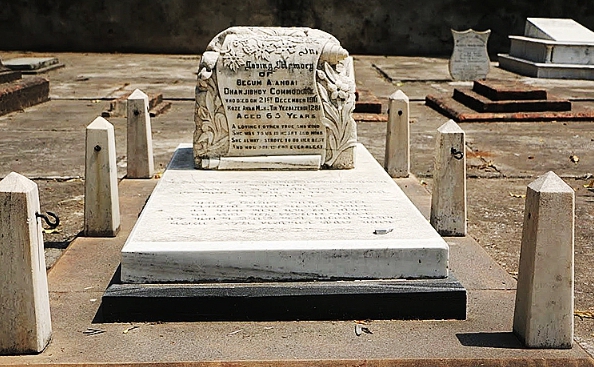 The only residents of the cemetery are a guard and a gardener. According to the gardener, who has been working here for the last 20 years, the cemetery is owned by Isphanyar Bhandara, who is also the owner of Murree Brewery. From time to time, he still comes here to pray at the graves of his ancestors. The last funeral that took place at the cemetery was back in 2008. However, every Sunday, Parsis from many different cities come and pay respect to their ancestors’ graves. According to the gardener, the only regular visitor is Bhandara’s son, who comes every Sunday to visit the grave of his grandfather.
The only residents of the cemetery are a guard and a gardener. According to the gardener, who has been working here for the last 20 years, the cemetery is owned by Isphanyar Bhandara, who is also the owner of Murree Brewery. From time to time, he still comes here to pray at the graves of his ancestors. The last funeral that took place at the cemetery was back in 2008. However, every Sunday, Parsis from many different cities come and pay respect to their ancestors’ graves. According to the gardener, the only regular visitor is Bhandara’s son, who comes every Sunday to visit the grave of his grandfather.
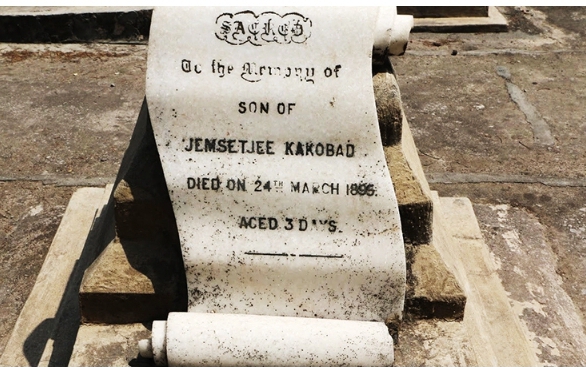 In 2003, the frontage of the graveyard along Murree Road was taken illegally by the authorities, and is now being used for all kinds of commercial activity. A case has been filed against Brig. Idrees, who handles the surrounding market area. However, it is still pending in the local courts.
In 2003, the frontage of the graveyard along Murree Road was taken illegally by the authorities, and is now being used for all kinds of commercial activity. A case has been filed against Brig. Idrees, who handles the surrounding market area. However, it is still pending in the local courts.
Most residents of Rawalpindi are completely oblivious to the fact that there is a Parsi cemetery amongst them, and the shops surrounding the cemetery are the main reason for it. When the owners of these shops were interviewed, it was evident that they were ignorant of the cemetery’s existence.
If we continue to neglect our religious minorities, we are in danger of losing our heritage, culture and legacy. There is a dire need to take up immediate protection and conservation of the Parsi cemetery, in order to safeguard the interests of past, present and future Parsi generations of Pakistan.
____________________
Courtesy: Youlin Magazine (Posted on: October 05, 2016)